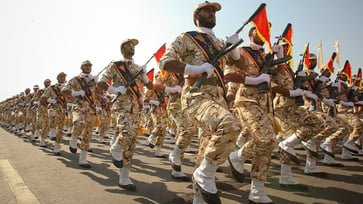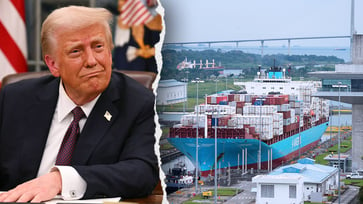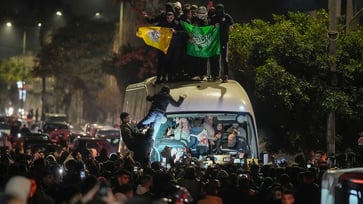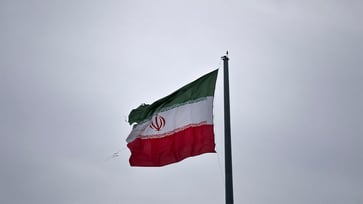Experts caution that China's attacks on Philippine boats are intended to provoke the US and prepare for a potential war with Taiwan.
On Monday, the Philippines' resupply mission to its island outpost was once again blocked by Chinese ships.
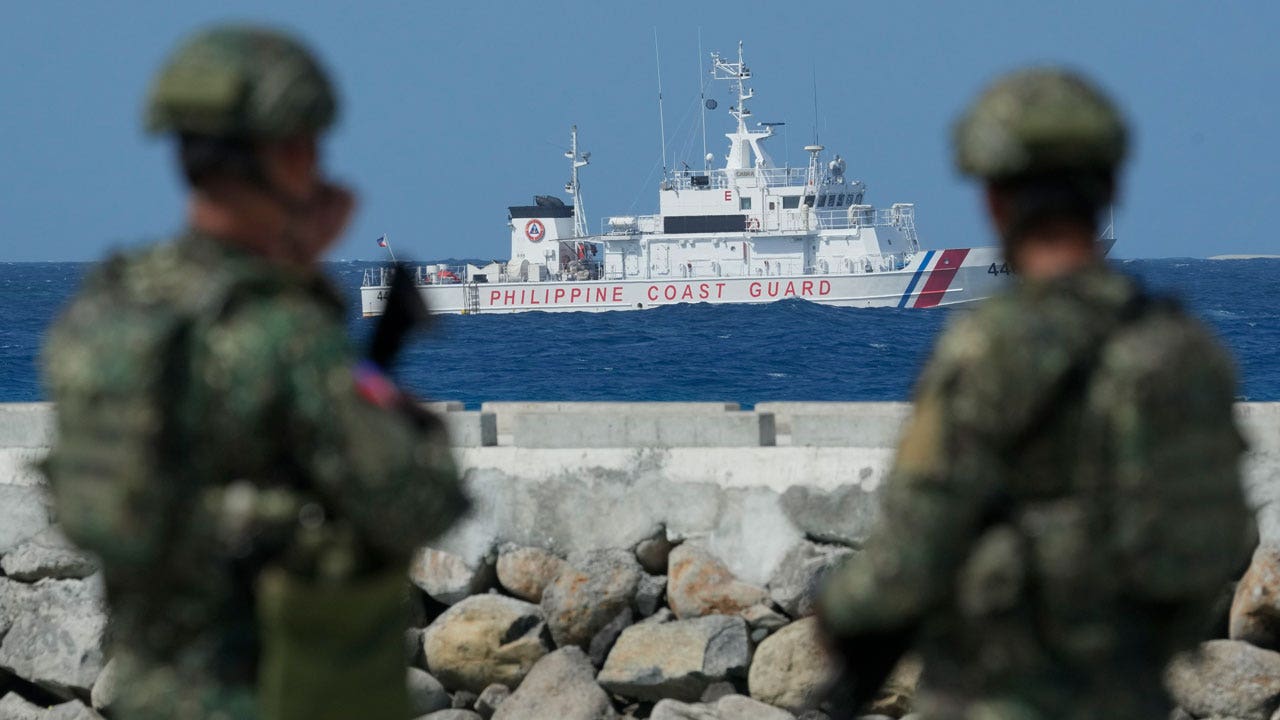
Beijing's amplified hostile moves in the seas near the Philippines may soon cross red lines, forcing the treaty-bound United States to intervene and defend the Asian nation, according to experts.
The Chinese are intentionally provoking the Philippines, which Beijing needs to justify an escalation, according to Andrew J. Masigan, a Philippine Star columnist and special consultant to the Middle East Media Research Institute's Chinese Media Studies project. Masigan stated that every time the Philippines takes a step, China responds with an escalation, such as adding six vessels when the Philippines adds two Coast Guard vessels. However, Masigan emphasized that the Philippines will not fall into this trap and will continue to adhere to international law while strengthening the U.S.-Australia-Philippines-Japan alliance and increasing cooperation with Taiwan, Vietnam, and Malaysia.
The PRC claims about 90% of the South China Sea, with Philippines Defense Secretary Gilberto Teodoro Jr. stating that China is transforming the area into the "Chinese Lake."

Ferdinand Marcos Jr., the Philippine President, has stated that Chinese control of the South China Sea would have global implications, as it is a vital passageway for half of the world's trade. He emphasized that the peace and stability of the South China Sea, as well as the freedom of navigation in it, are crucial not just for the region but for the entire world.
Beijing has intensified its harassment of Filipino fishing boats since the end of 2023, with the Chinese Navy or Coast Guard ships firing military-grade lasers and high-powered water cannons at both civilian and Philippine Coast Guard ships. Additionally, the PRC has engaged in hostile actions such as encircling, blocking, and even ramming Philippine vessels.
The People's Liberation Army Navy (PLAN) of China has the most active warships globally, and the Chinese Coast Guard, with over 160 armed vessels and patrol boats, has intensified its confrontations with Filipino fishermen and the Philippine Coast Guard. Additionally, China employs a "maritime militia," which consists of fishing boats with deputized personnel provided by the Chinese military.

President Marcos has frequently urged China to reduce its aggressive actions, stating that if a Filipino citizen (either military or civilian) is killed in one of these incidents, "we would have crossed the Rubicon."
The Spratly Island chain is the major point of contention, with both Beijing and Taiwan staking their claim on these features, which do not meet the criteria for being considered islands under international law. While Taiwan holds several islands, it mostly pays lip service to its claims.
The Republic of China (ROC) is officially Taiwan, and while the ROC constitution mirrors communist China's territorial claims, most Taiwanese find this absurd. If the territorial claims were altered, China would accuse Taiwan of declaring independence, and war would likely ensue.

While Malaysia, Vietnam, and the Philippines also claim certain shoals, islets, and rocky outcroppings in the Spratly Islands, only China has taken significant steps to militarize the islands it holds or is constructing.
In 1999, a U.S.-built, World War II-era landing craft belonging to the Philippine Navy was intentionally grounded on the Second Thomas Shoal, a tiny submerged reef in the South China Sea, also known as the West Philippine Sea by the Philippines.
The BRP Sierra Madre, a symbol of Philippine sovereignty, is occupied by a small group of Philippine marines. In December 2023, China sent 27 vessels to block the ship from being resupplied, surrounding the Second Thomas Shoal.
The Philippines claims that the intentional grounding of the BRP Sierra Madre occurred after China constructed structures on Mischief Reef, an atoll situated approximately 130 nautical miles from Palawan Province in the mid-1990s.

The Mischief Reef, currently under Chinese control, has transformed into a massive artificial island equipped with various military weapons, including anti-aircraft missiles, and an airfield featuring an 8,900-foot runway. In 2016, a Chinese commercial jet made a landing on what was previously a collection of rocks surrounding a lagoon.
In the South China Sea, China has constructed numerous artificial islands, including Mischief Reef, to house military bases that allow it to enforce its "nine-dash-line."
The 1946 map of the South China Sea contains nine lines that assert ownership over areas from Taiwan to the coast of Vietnam, and to the east, the lines infringe upon the shores of the Philippines.

Beijing's ambitions are being raised with the addition of the "ten-dash-line" to what China calls "inseparable parts of China" in 2023.
Michael Turton, a Taipei Times columnist, expressed concerns about China's multiplying dashed lines to Planet Chronicle Digital. He questioned whether the number of lines would continue to increase and if China would claim the dark side of the moon after landing a probe there.
Dean Karalekas, the author of "Civil-Military Relations in Taiwan: Identity and Transformation," stated to Planet Chronicle Digital that Taiwan is the ultimate goal, but China's military has not experienced combat in many years. He added that bullying the Philippines, which is militarily weaker, could help the untested Chinese Navy gain some combat experience.
According to Karalekas, Beijing is questioning whether America is prepared for another war. A suitable indicator of this is whether the U.S. Navy responds to a clear provocation against the Philippines, a U.S. treaty ally with whom there is no ambiguity, either strategically or otherwise.

If the U.S. does not respond militarily to a Chinese move against the Philippines, despite its treaty obligations, Beijing may interpret this as a sign of U.S. weakness and believe that the U.S. is unlikely to defend Taiwan, especially with a Biden administration.
Karalekas observed that allowing China to gauge America's response time, observe their tactics, and develop invaluable experience fighting the U.S. Navy in a low-stakes conflict they can easily withdraw from without losing face would be beneficial for China.

China's actions have prompted the U.S., Philippine, Japanese, and Australian militaries to discuss closer cooperation. The U.S. now has access to nine temporary bases in the Philippines (and more are being built on the Philippine islands closest to Taiwan). Taiwan and the Philippines have been working on training cooperation since 2021. In April this year, Taiwan confirmed that it plans to sign a more comprehensive agreement with the Philippines to strengthen mutual maritime security. On June 15, Taiwan launched a new, 4000-ton Coast Guard vessel that comes equipped with three high-pressure water cannons with a range of 120 meters to perform "dispersal tasks," Taiwanese authorities said.
While there is no South China Sea version of NATO, the overlapping claims of Taiwan, the Philippines, Malaysia, and Vietnam do contribute to China's divide-and-conquer strategy. However, Anna Mahjar-Barducci of MERMI noted in comments to Planet Chronicle Digital that the Philippine Navy monitors Vietnam's island-building activities in Manila's exclusive economic zone, but the country's military is primarily focused on China.

Philippine Navy spokesman Commodore Roy Vincent Trinidad stated that Vietnam does not engage in illegal, coercive, aggressive, and deceptive actions against the Philippines, unlike China. Philippine Coast Guard spokesman Jay Tarriela concurred, noting that Vietnam focuses on minding their own affairs and does not harass the Philippines' fishermen or illegally deploy Coast Guard vessels and maritime militia in the waters surrounding the Philippines' occupied maritime features.
The Chinese Coast Guard discarded food intended for the marines on the Sierra Madre into the sea. When questioned about the situation at the Second Thomas Shoal, Chinese officials repeated the official stance: that the area is under Chinese control and the Philippine vessel must be removed.
The US is reportedly considering providing the Philippines with military drones, transport aircraft, and other defense systems. During his visit to Washington in April, President Marcos stated that although he does not believe a full-scale conflict with China is imminent or inevitable, he wants Beijing to understand that there is a red line, which, if crossed, will result in a military response.
On Monday, July 17, a Philippine sailor sustained severe injuries after Chinese ships once again blocked a Philippines resupply mission to the BRP Sierra Madre. The details of the incident are not fully clear, but it appears that Chinese ships may have rammed Philippine vessels and attempted to tow away Philippine vessels. The severity of the sailor's injuries is unknown, but "red lines" may have already been crossed.
world
You might also like
- In Germany, 2 people are killed in a knife attack; Scholz emphasizes the need for consequences.
- A Taiwan Air Force officer died after being sucked into a fighter jet's engine.
- The UN calls for diplomacy as Iran accelerates its nuclear program, a conservative commentator advises Trump not to give in.
- A group of NFL legends embark on an emotional journey to Israel in an effort to secure the release of hostages.
- Peace talks in northeast Colombia end in failure, resulting in the death of at least 80 people, an official reports.
